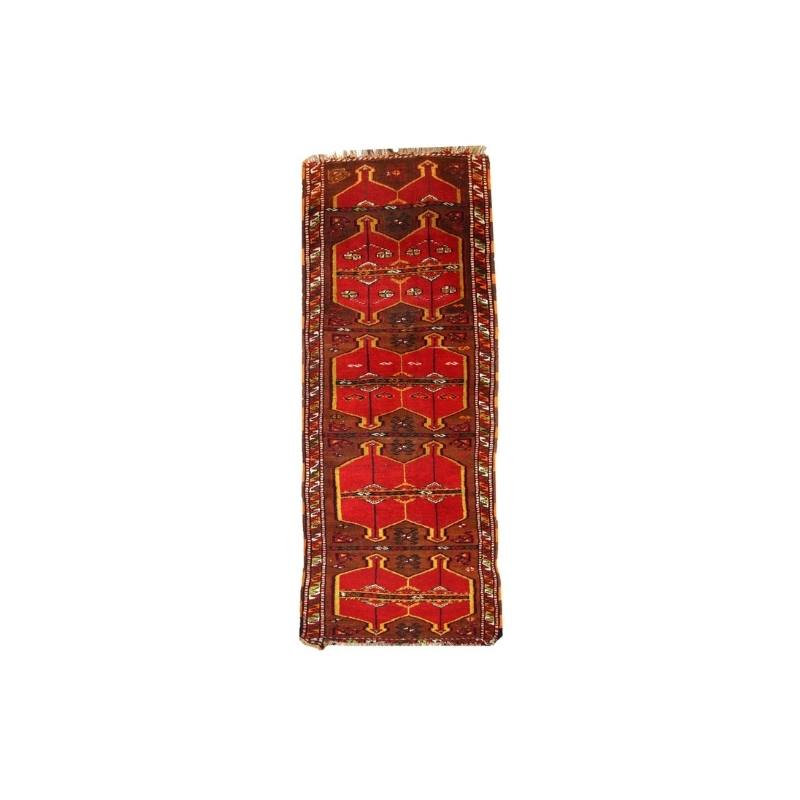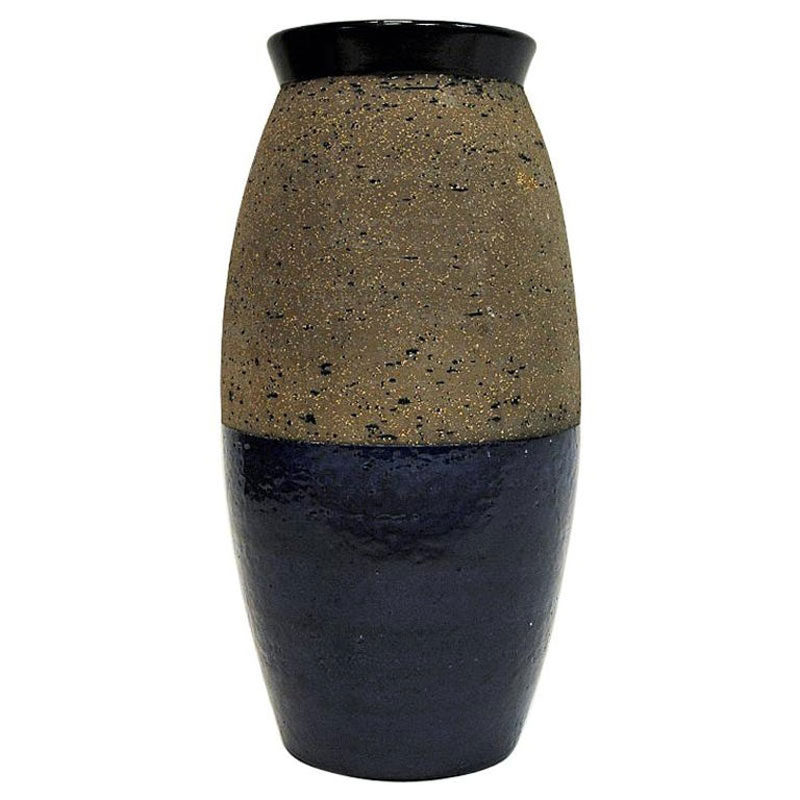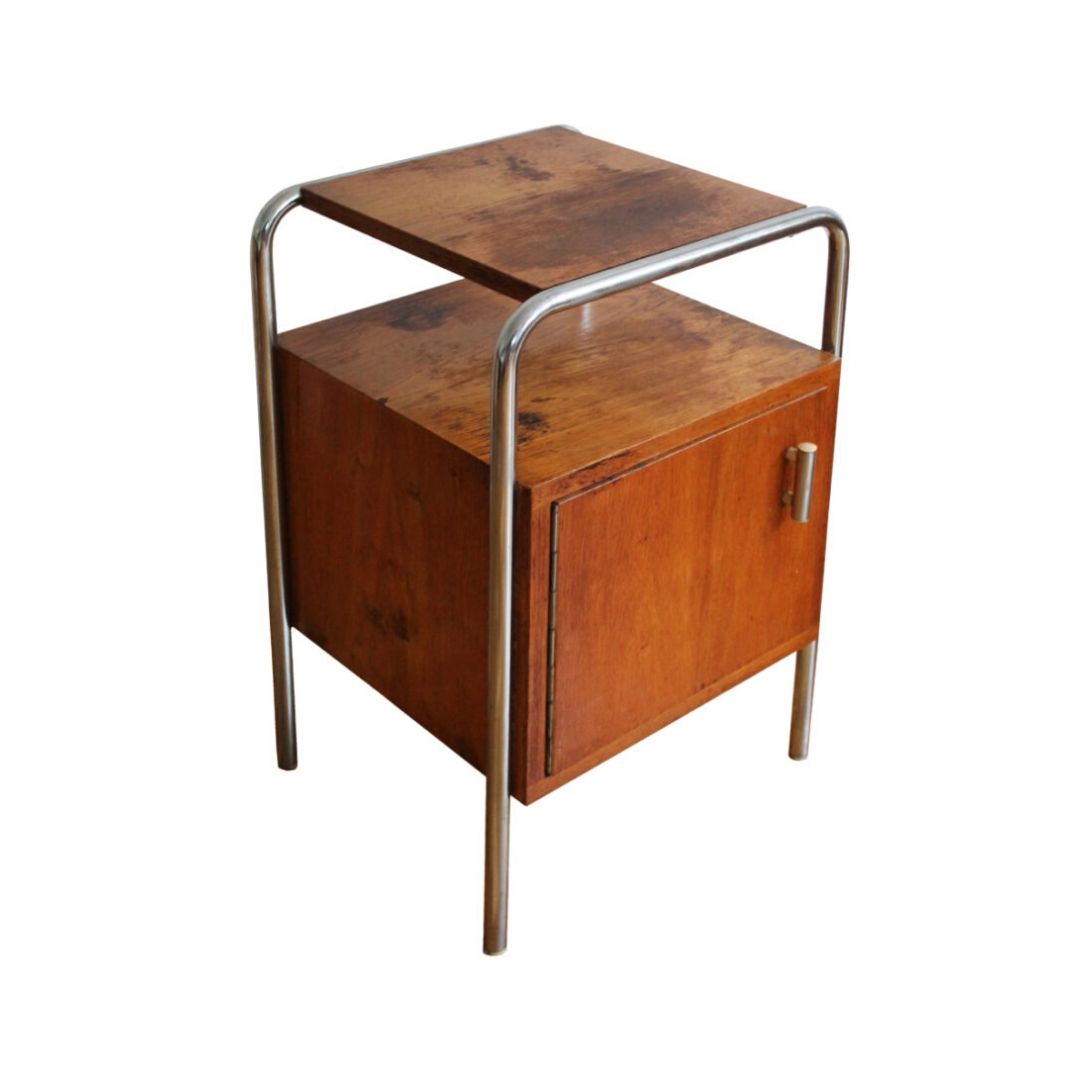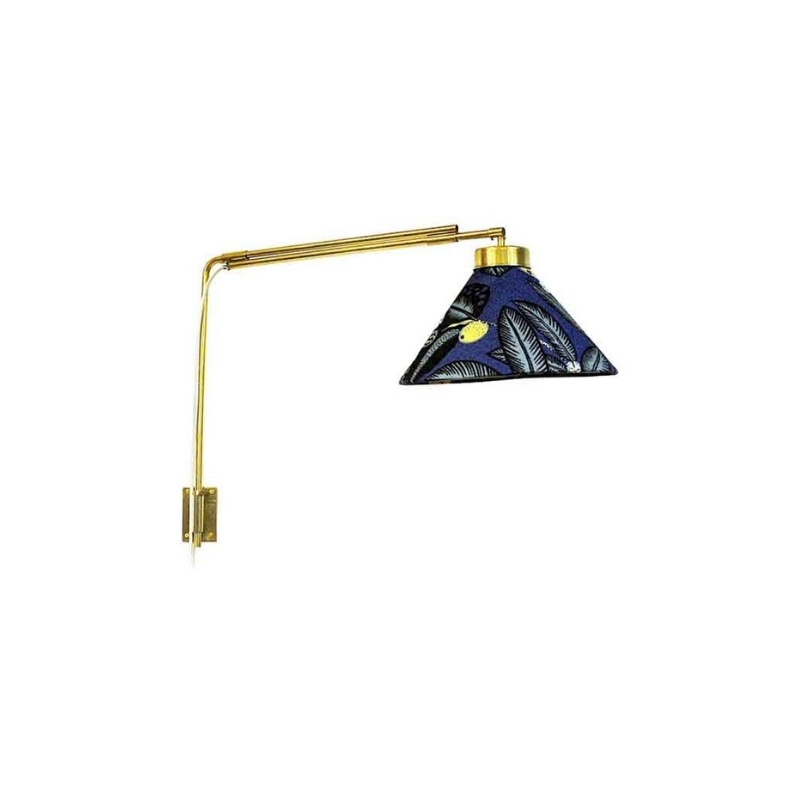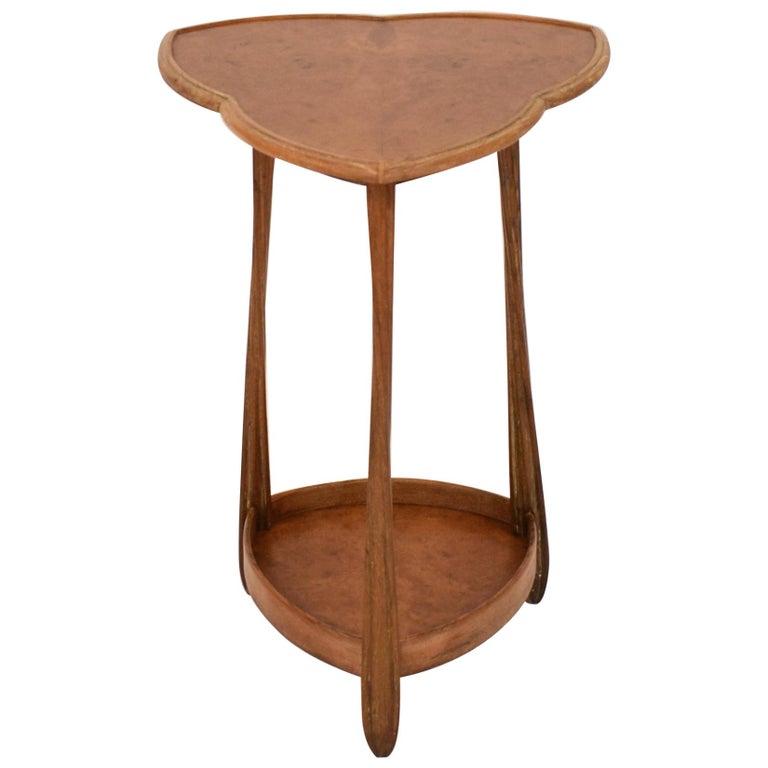Excellent idea, James. I've...
Excellent idea, James. I've followed this great thread closely and I have a few points that I would like to share.
There's something about the wavy elements and their combined triangular shape that bothers me. Perhaps because circles goes better together with squares than triangles. I would love to see a small model with 4 elements and a square glass top with rounded corners. In my mind it just seems more balanced and harmonic.
I think that the first blocky model had a very good thing going on with the 90 degree edges, because the higher end of each element seemed to rest on the next element's lower end much than after you made them round. It just seemed more stable, more natural as this is how it would look if you really found such three elements and chose to play a little with them. But Koen's right when he says that the "small triangular shapes left on the intersection of two elements are too small and out of scale". So why not making each element say 5-10 cm. longer at each straight end (as SDR also mentioned)? It would make the piece much more dramatic to look at, I think. It's important to try all options which can be done quite easily with this design.
But regarding the wavy elements and triangular shape, you could loosen it up by making each element curve slightly outwards from the center. It would certainly strengthen the impression of rotation, if that's what you going for.
And last, I think you should try seperating the elements' sides from the edges by fx. making the elements of plywood and then laminate only the sides with black, semi-glossy something (like HM's LTR tables by Eames) and let the lacquered edges show the different layers of plywood. I think it would add another visual dimension to the design by letting the sides and edges be different but still co-exist in contrast to each other. You would notice the shape and direction of each element more clearly.
What's so good about the design behind your table, James, is that it's relative easy to really keep it simple yet in a complicated but precise way. This is the secret behind all good design.
So please keep on developing this table and show us know how it goes.
Well, it's amazing
how a strong idea will generate such interest and so many possible variations. The subtle observations of many are so interesting to encounter.
As a designer I feel intimately for James, who will react in some cases with revulsion that his tender idea can be so violently tampered with -- in ways that won't accord with the original vision. Such is ever the way. . .
It is possible to analyze form in ways that have nothing to do with its materiality, and this is an excellent example, it seems (thanks again, Kames !). In the matter of how the three main elements "should" be shaped, one could argue that there needs ot be an intuitive impression of strength, and that for some at least this will mean a thicker central section -- while it could equally be argued the that terminal connections are the parts that should be beefed up. So, in the case of a tug-of-war with equal sides, perhaps the "right" answer is to have a perfectly uniform thickness throughout -- just as James has designed it.
Another direction your table might take...
I've always thought truly elegant modern designs have suitability simultaneously for high cost materials versions and low cost ones.
I've long wished good designers would breath beauty and life into particle board. Not particle board designed to look like something else, but particle board allowed to look like itself. If you go back to early modernists, they revealed the beauty and utility of all manner of materials that persons thought should be hidden or not used at all (metal, fiberglass, bent wood,vinyl, etc.) in home and office furnishings.
No designer that I know of has really worked out any forms that look particularly good in particle board.
It strikes me that this design of yours might look good in particle board, too, presented honestly as what it is. And to carry on the low cost theme to its logical conclusion, maybe the table top ought to be plexiglass. I've always liked plexiglass since I learned its scratches would vanish with Pledge (the windshield on my dad's old boat only needed Pledge to look clear again). Made from particle board and plexiglass, these tables could be made for pennies and really bring affordable style to the masses as the old modernist used to envision, before they decided they wanted to go uptown exclusively.
Particle board is such a wonderful material. If you drive by a mill in Coos Bay Oregon, or some where, it appears to be made from the vast piles of saw dust that a mill generates. What a great thing to do: you build the house out of a renewable resource--wood--and you furnish it with furniture made from the saw dust left over from cutting the wood for the frame. Talk about not wasting any part of the animal.
No doubt I'm oversimplifying some, but I really think particle board has gotten a bum rap from being used as a vehicle for cheap veneers. I think some good designer with a keen idea like this could do particle board the same favor that Frank Lloyd Wright once did for cement blocks.
Hi James
You must be tired by now from reading all these suggestions and nobody offering you a hand to cut or sand the pieces...
Considering that you found my comment on the corners worth trying, may I suggest something else? I suspect that dcwilson's suggestion on using a Coca-cola type of curve (which you could do, but I would never suggest it because it is another product, not an improuvement on this one)is inspired by his disconfort with a "constructed" curve. No matter what you do...and letter (font) designers have known this for centuries...you can not construct a curve that the eye will not "de-construct" in different radii, straight or curved lines. What they do and would you could do is ti draw it by hand, large on the wall or to use a flexible rod (not wood, which is not homogenious enough) and fix one end it on a board with a few small nails on either side. Than you take the other end end curve it into the "S" shape that you want and fix that to the board to. Now you have a template of a curve that is uniform and not "build". If you are interested in dcwilson's suggestion the best thing toi do is to draw the obtained curve on two different sheets and move them horizontally from each other until you are pleased with the result. Good luck!
By the way, all our desks here are egg shell varnished MDF, which is a pleasant colour combined with the grey blue screens...but...I find that it does not age very well and in spite of 4-5 layers of varnish it wares off and condensation or a spilled cup of coffee is enough to make the fibers expand under the almost un-visible cracks. As far as the ideological aspect of it goes, I do not think that covering the MDF with an opaque colored paint is less "true to the material" as the transparent varnish. In your case I think that anything beyond the simple geometrical shape detracts from the logic of this interesting succession of waves.
So many ideas ...
... and so little skill. Sigh. I love the angled corners, It definately pulls the three pieces together into a coherent triangular form. It suddenly looks like one form instead of three pieces awkwardly stuck together. I got some cheap aluminum yardsticks to lay out the curves and it works like a charm. I love the idea of blue laminate on plywood but have no idea where to find such a thing. I'll start looking. The trickiest part is drilling the holes perfectly straight. If anyone has any woodworking tips I'm all ears.
Hmmm...
James,
As I have had many exchanges with the wise Mr. de Winter, I feel qualified to give his typically correct and refinely worded remarks a thoroughly American translation: deep six my suggestion of a "Coke Curve." 🙂 On the other hand, there does seem to be something to this radii business he's talking about, so explore it.
Koen,
Shall we both hop a plane and go help James with cutting and sanding. I am ready. I could at least clean up. 🙂
Four legs
I'm making a model with four legs but how to stabilize it? The square, unlike the triangle, can be deformed which is what has allways bothered me about that ubiquitous Noguchi coffee table and what started this whole thing in the first place.
So, what would hold the four legs at a perfect square (or for that matter at some lozenge shape for a surfboard or oval top).
All I could think of is one thin rigid bar between two opposite corners fixed to the rods or wires between both rod pairs. That all seems like too much stuff hanging in the middle. I think it has to be something that you don't NEED to use if you prefer the table form "squishy" and if you don't use it there is no sign of anything being missing. On the other hand if you do prefer the security of a piece of hardware assuring you your table is absolutely square, then it ought to look cool to really state what it does. Not some invisible little ratchet hidden within the legs.
It's a warm sunny day in SF so I've been out with the dogs and got a little baked.
If you need any help, please contact us at – info@designaddict.com



